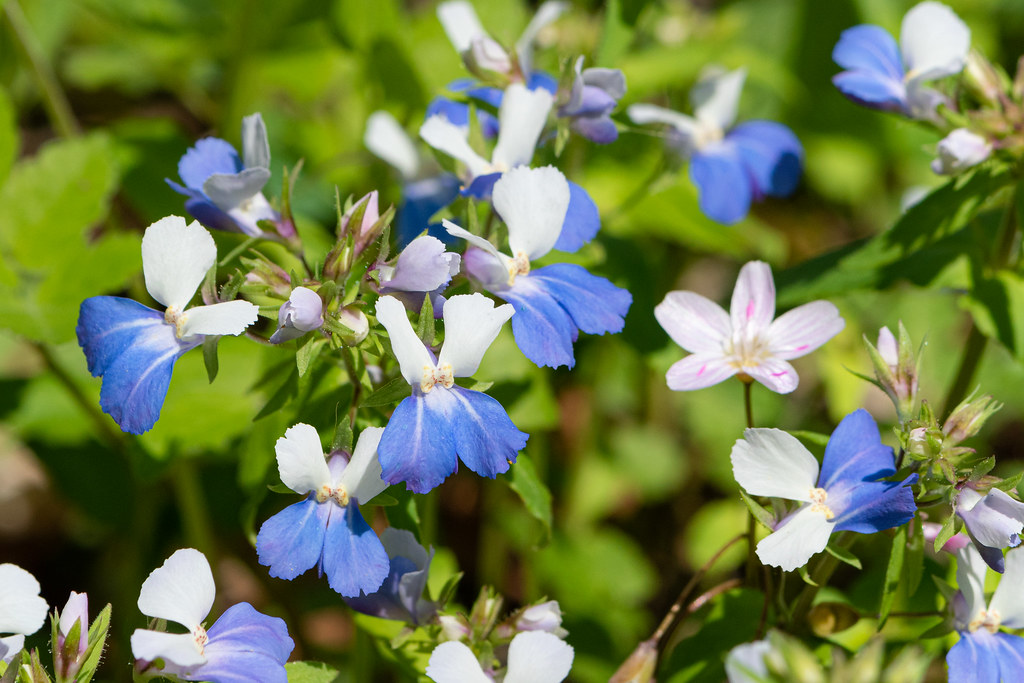#collinsia verna
Text
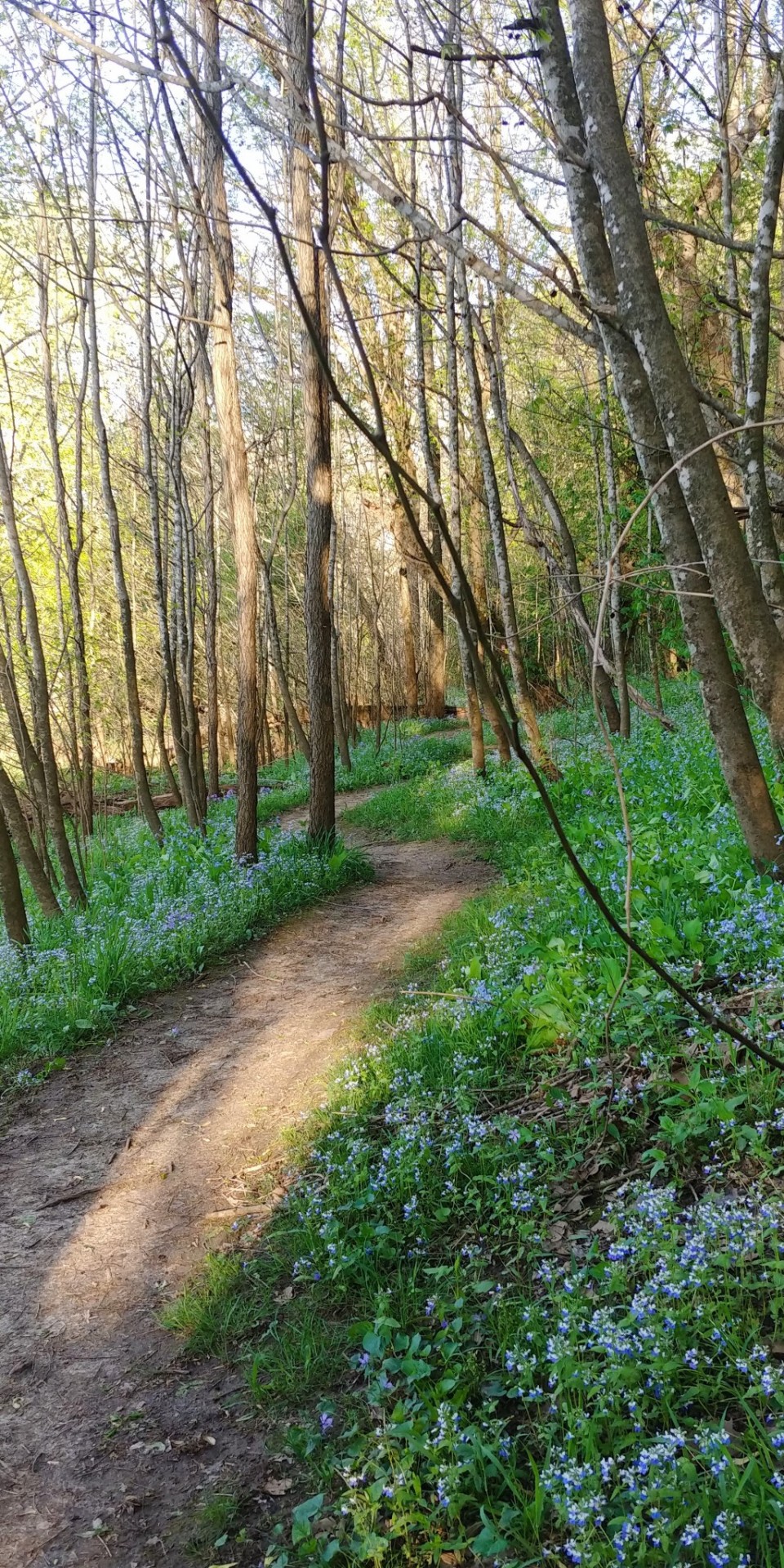


Wildflowers flourishing along a tranquil Ozarkian trail. It was a blessing to enjoy this beautiful place where the sun kissed spots of the blue forest floor and only the sound of bird songs and soft wind whispered through the trees. The blue-eyed mary (Collinsia verna) and virginia bluebells (Mertensia virginica) thriving on the forest floor are both native spring ephemerals found throughout the central and eastern parts of North America.
April 17th, 2023
Washington County, Missouri, USA
Olivia R. Myers
@oliviarosaline
#nature#woods#naturecore#fairycore#cottagecore#missouri#ozarks#the ozarks#forest#flowers#forest floor#wildflowers#spring#spring flowers#Virginia bluebells#blue-eyed mary#Mertensia virginica#collinsia verna#collinsia#mertensia#landscape#landscape photography#flower photography#nature photography#forest photography#hiking missouri#trail#hiking
115 notes
·
View notes
Text

Ohio Spring Wildflower Field Guide
#blue eyed mary#Blue-eyed marys#Collinsia#Chinese houses#Collinsia verna#flower#flowers#spring flowers#spring#floral#wildflowers#wild flowers#ohio#ohio wild flowers#botany#april#may
1 note
·
View note
Video
Blue-Eyed Mary (Collinsia verna) by Wayne National Forest
Via Flickr:
Blue-eyed Mary is a favorite among plant-lovers and is eagerly awaited each spring. This species is a classic “spring ephemeral.” Spring ephemerals are herbaceous plants that pop up in the spring, bloom, and then soon disappear from aboveground as summer rolls around. Patches of blue-eyed Mary can be found in rich bottomlands and on the lower slopes of hills around southeast Ohio. Sometimes you’ll find just a few plants, while other times you’ll find a colony that spreads as far as you can see!
Remember to follow Leave No Trace principles when visiting the Wayne National Forest. Take only photos of native wildflowers, and leave them for the next person to enjoy!
Forest Service photo by Kyle Brooks
1 note
·
View note
Text
Innocence
noun
The state, quality, or virtue of being innocent, especially.
Freedom from sin, moral wrong, or guilt through lack of knowledge of evil.
Guiltlessness of a specific legal crime or offense.
Freedom from guile, cunning, or deceit; simplicity or artlessness.
Lack of worldliness or sophistication; naiveté.
One that is innocent.
A pretty American scrophulariaceous plant, Collinsia verna, the flowers of which have the lower lip blue and the upper purple or nearly white.
Harmlessness; innoxiousness: as, the innocence of a neutral article of diet in disease.
Freedom from moral wrong; untainted purity of heart and life; unimpaired integrity; sinlessness; artlessness: as, the innocence of childhood; angelic innocence.
1 note
·
View note
Photo
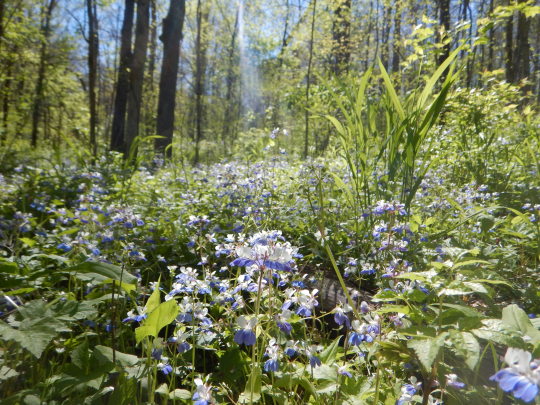
Collinsia verna,
Since the removal of honeysuckle from this section of the preserve there has been noticeable and extreme increase in this annual. It fills in the forest floor mosaic in any open spot blanketing the sunlit valley with white and blue. As for other plants of interest such as Trifolium reflexum which was found on the preserve along with several other individuals that were planted, it is a needle in the haystack scenario.
In open mixed white oak and walnut flat woods as they transition into riparian woodland.
Richardson Preserve, GPOHC/TNC, Hamilton, Ohio.
264 notes
·
View notes
Text

Blue-eyed Mary (Collinsia verna), photographed at Cummins Nature Preserve, Mason Co, Kentucky. April 2022
2 notes
·
View notes
Photo




Some blue and purple season highlights: blue-eyed Mary, showy orchis, phlox, waterleaf. Not pictured: Jacob’s ladder, dwarf larkspur
10 notes
·
View notes
Text
A Few More Wildflower Identified From A New Location
A Few More Wildflower Identified From A New Location

Hello everyone! I hope this post finds you well. The photos on this post were taken on May 27th when I visited another set of woods the same friend’s farm. This section is across the highway and East Fork Tebo Creek runs through it. The day I was there it was more like a small river. There are a lot of creeks that only have water in them during the rainy season, but Tebo Creek is well known…
View On WordPress
#Collinsia verna (Blue-Eyed Mary)#Enemion biternatum (False Rue Anemone)#Glechoma hederacea (Ground Ivy)#Ornithogalum umbellatum (Common Star of Bethlehem)#Smilax ecirrhata (Upright Carrion Flower)
0 notes
Photo
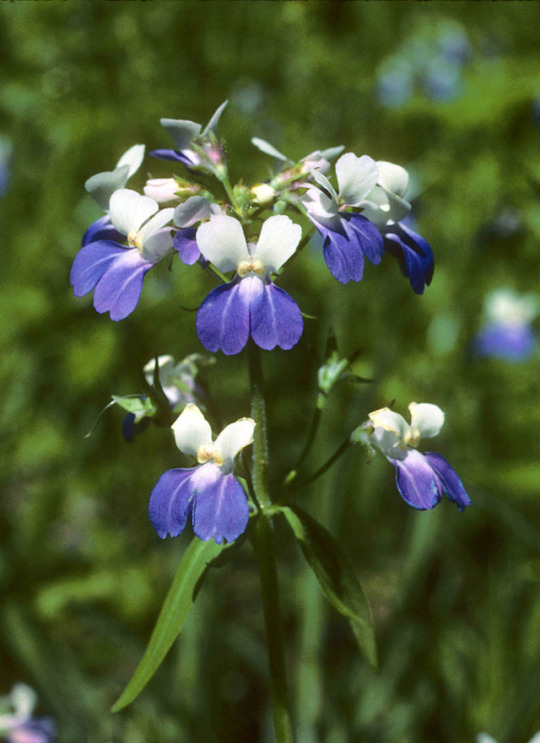

Blue-eyed Mary (Collinsia verna) is a winter annual that is native to the eastern and central parts of North America but has become endangered in the states New York and Tennessee. The flowers are bicolored white and blue.
38 notes
·
View notes
Photo
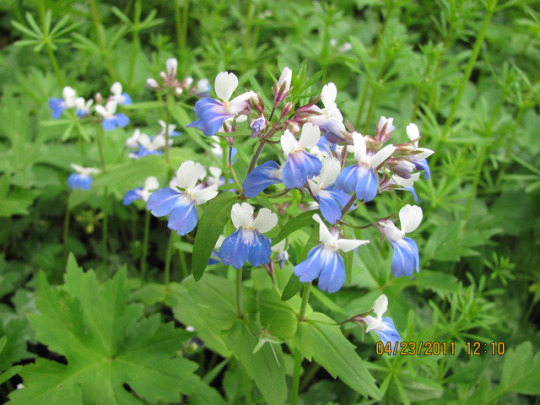
Ontario Species at Risk for March 25, 2019 is the Spring Blue-eyed Mary (Collinsia verna)
Status: Extirpated
What it looks like
Spring Blue-eyed Mary belongs to the snapdragon family. It reaches 20 to 40 centimetres tall. The leaves are opposite, simple, mostly stalkless and lacking teeth or with only a few along the edges. The blossom typically consists of whorls of four to six flowers. Flowers have five lobes, the upper ones white to pale blue, the lower bright blue. This plant is a winter annual, so-called because seeds germinate in the fall and seedlings grow for a month or two, spend winter dormant, and resume growing in late winter and flower by late May.
Where it lives
Spring Blue-eyed Mary is usually found in open woodland within floodplains. It prefers moist rich soils and is often associated with Sugar Maple and White Oak trees.
Where it’s been found in Ontario
In Canada, this plant was reported from open woods in Middlesex, Oxford and Elgin counties in southwestern Ontario. Although it may still exist there, it has not been reported since 1954.
Spring Blue-eyed Mary is found throughout the eastern and midwestern United States, ranging from Pennsylvania west to Iowa, Missouri and Oklahoma, and south to Arkansas, northern Mississippi and western Virginia.
Why it disappeared from Ontario
The historical sites for Spring Blue-eyed Mary in Ontario were logged. This is believed to have resulted in the loss of this species from the province.
Source: https://www.ontario.ca/page/spring-blue-eyed-mary
Photo Credit: US Forestry Service
0 notes
Text
The Run from the Roses by Allen Bush
Fallen dogwood petals at home, Louisville, KY. April 23.
I run from roses until mid-April, when my mood changes, as the Kentucky Derby grows near. The Run for the Roses turns me tenderhearted toward roses. It’s complicated.
We have two disease-ravaged and bug-eaten pitiful roses in our garden. I should back up for a second. I’m married to Rose Cooper. (Long accustomed to the joke, she’s OK if you call her Rose Bush.) I’m crazy about Rose. One Rose is all I desire, but I can’t convince her to toss out the other two, mangy roses.
Dutchman’s breeches, Dicentra cuccularia, Wolf Pen Mill. March 31.
And then there is the horse race.
April-flowering dogwoods signal the feverish run-up to the first Saturday in May. The pace quickens as I continue my spring ritual of planting more trees and perennials than I’d first intended in February. I also begin fantasizing about a garland of roses being thrown over the neck of my Derby horse in the winner’s circle at Churchill Downs.
Beaked corn salad, Valerianella radiata, Vanarsdall Road. April 9.
Just as it’s foolish to think I’m going to pick the winner, there will be hits and misses in the garden. There is only one certainty: No place on earth is prettier than Kentucky in April and May.
Blue-eyed Mary, Collinsia verna, near Bald Knob. April 18.
Spring in Kentucky is about anticipation and pacing—casting off a wet, gray winter, and trying to keep up with a maddening bloom sequence from Dutchman’s breeches to lyre-leaf sage. Our garden seems like an afterthought. It can’t compare with the natural grace of Wolf Pen Mill, Bald Knob or Oregon Road.
Guyandotte beauty, Synandra hispidula, near Bald Knob, April 18.
This year’s Kentucky Derby will last for two minutes and change. Doubtful I will pick the winner, but that’s OK. (My money is on Irish War Cry.) In the Derby aftermath, big hats go home and no one will drink a syrupy mint julep for another year.
Philadelphia fleabane, Erigeron philadelphicus, Vanarsdall Road. April 19.
Kentucky’s spring season is more than a horse race.
My two ugly garden roses are on the verge of palliative care.
Largeflower valerian, Valeriana pauciflora, Oregon Road. April 24.
The dogwood blooms faded nearly three weeks ago. But they’ll return. A dogwood has more staying power than a rose.
Lyre-leaf sage, Salvia lyrata, Woodside Road. April 27. Holly Cooper photo.
The lyre-leaf sage, Salvia lyrata, is in bloom in the Bluegrass this week, a few weeks before heat and humidity smother My Beautiful Old Kentucky Home.
Wish me luck on my Derby bet.
The Run from the Roses originally appeared on Garden Rant on May 3, 2017.
from Garden Rant http://gardenrant.com/2017/05/the-run-from-the-roses.html
0 notes
Text
Meeting Blue-Eyed Mary
For some plant species, pictures will never do them justice. I realized that this week as I first laid eyes on a colony of blue-eyed Mary (Collinsia verna). I was smitten. These lovely little plants lined the trail of a floodplain forest here in central Illinois. It was the blue labellum that first caught my eye. After years of reading about and seeing pictures of these plants, meeting them in person was a real treat.
C. verna is winter annual meaning its seeds germinate in the fall. The seedlings lie dormant under the leaf litter until spring warms enough for them to start growing. Growth is rapid. It doesn't take long for them to unfurl their first flowers. And wow, what flowers they have!
The bicolored blooms are a real show stopper. The lower lip contrasts starkly with the white top. It's about as close to true blue as a flower can get. Not only are they beautiful, the flowers are marvels of evolution, exquisitely primed for pollination by large, spring-hardy insects. When something the size of a bumble bee lands on the flower, the lower lip parts down the middle, thrusting the reproductive bits up against the abdomen. This plant doesn't take any chances.
Being an annual, C. verna can only persist via its seed bank. Populations can be eruptive, often appearing in mass after a disturbance clears the forest of competition. Most populations exist from year to year as much smaller patches that slowly build the seed bank in preparation for more favorable conditions in the future. Because of its annual life cycle, C. verna can be rather sensitive to habitat destruction.
Seeing this plant with my own eyes far exceeded my expectations. It was one of those moments that I couldn't peel myself away from. I love spring ephemerals and this species has skyrocketed to the top of my list. Its beauty is made all the more wonderful by its ephemeral nature. Enjoy them while they last as it may be some time before you see them again.
Further Reading:
http://bit.ly/1QfZUuD
http://bit.ly/1XD70z0
http://bit.ly/1MBrAzm
22 notes
·
View notes
Photo





A trapse by the hillside clearings with spires of purple, blue, and white illuminated by the sunlight.
A section of Richardson Preserve, mesic and more rich section of hillside that was cleared of Amur Honeysuckle a few years ago is now a spectacle of ephemeral forbes: Pale form and purple form dwarf larkspur ( Delphinium tricorne ) and blue eyed mary ( Collinsia verna ) make up most of the noticeable scenery within the forest floor mosaic, Replacing the grounds that were covered in trout lily and toothwort not to long ago, Phlox divaricata and Anemone quinquefolia along with a few Trillium species are still hanging on in places occasionally dappled with the small yellow flowered Ranunculus species. By now the Claytonia spp, fumeworts, and Erigenia bulbosa are already going to seed. Transitioning now is a mid season array of Chaerophyllum procumbens, Podophyllum peltatum, and Osmorhiza claytoni.
I may need to go pull some honeysuckle on the hillside soon before it gets out of hand again. Ecological stewardship is critical for protecting natural landscapes and the ecological benefits and connections they have.
#Collinsia verna#delphinium tricorne#collinsia#Delphinium#forestcore#cottagecore#meadowcore#ecology#wildflowers#spring#ohio#plantblr#botany#kawaii#fairycore
68 notes
·
View notes
